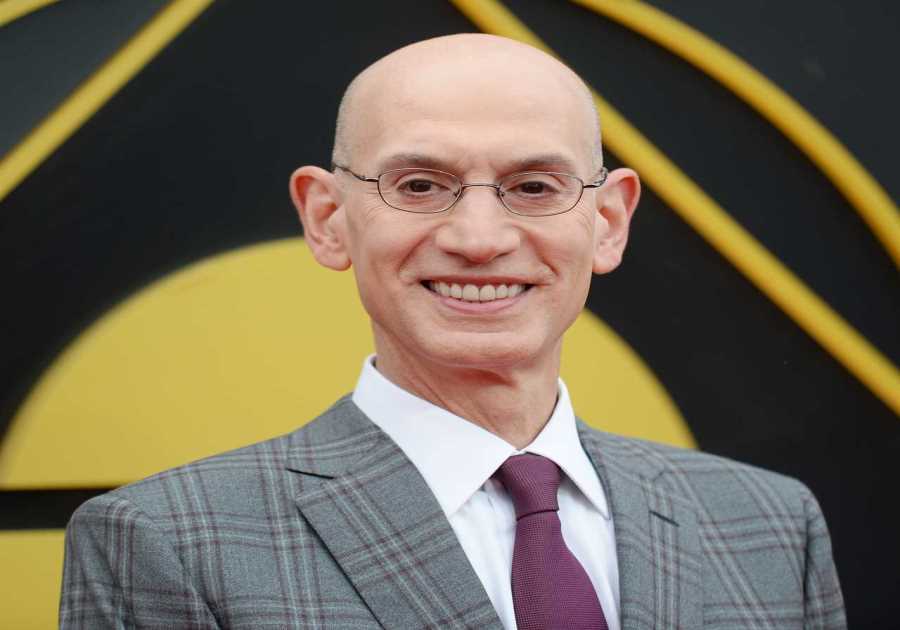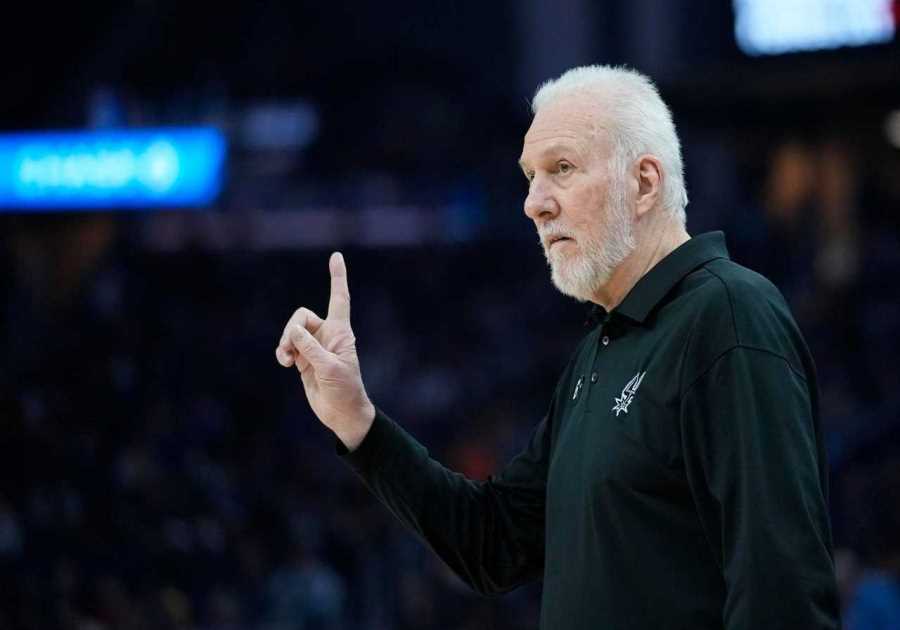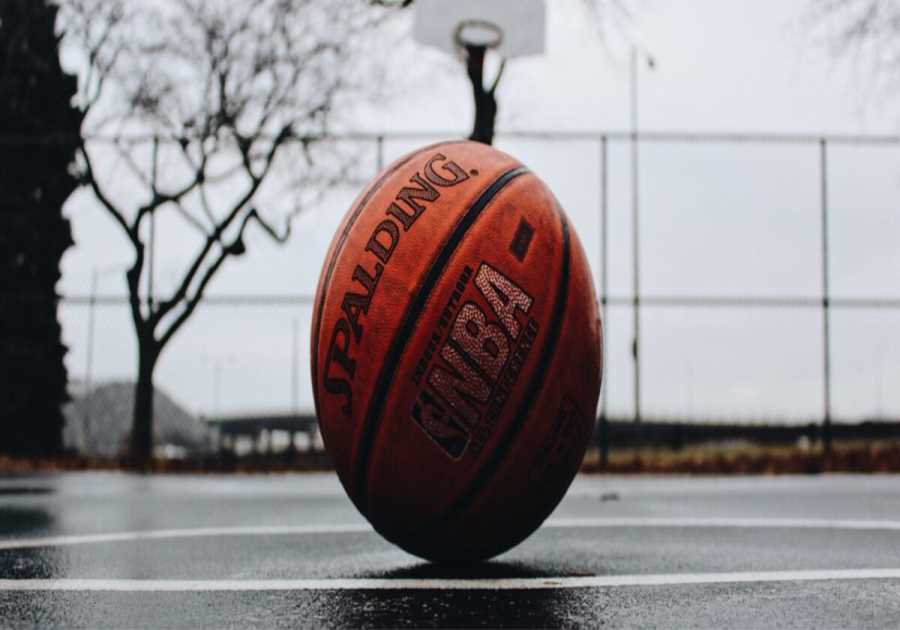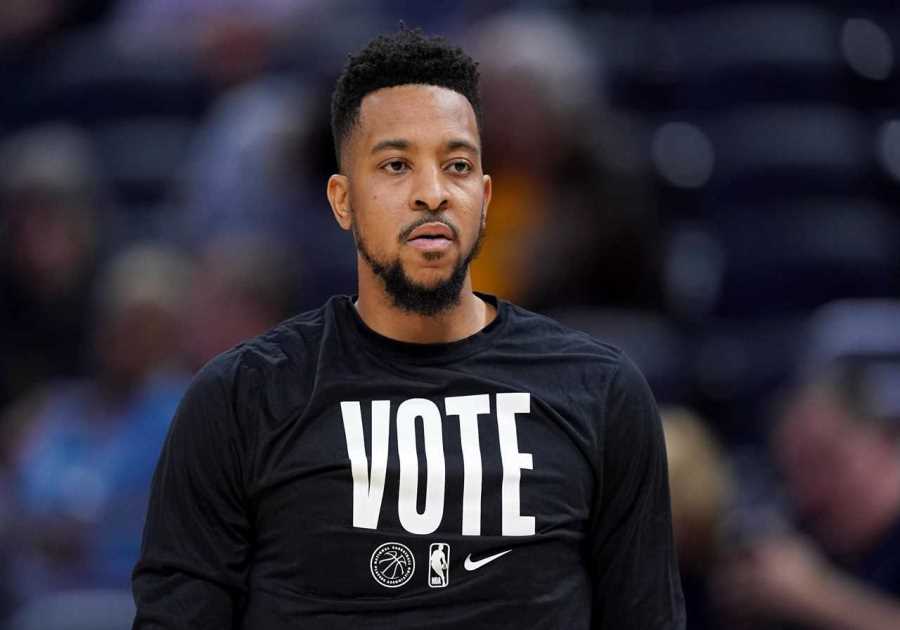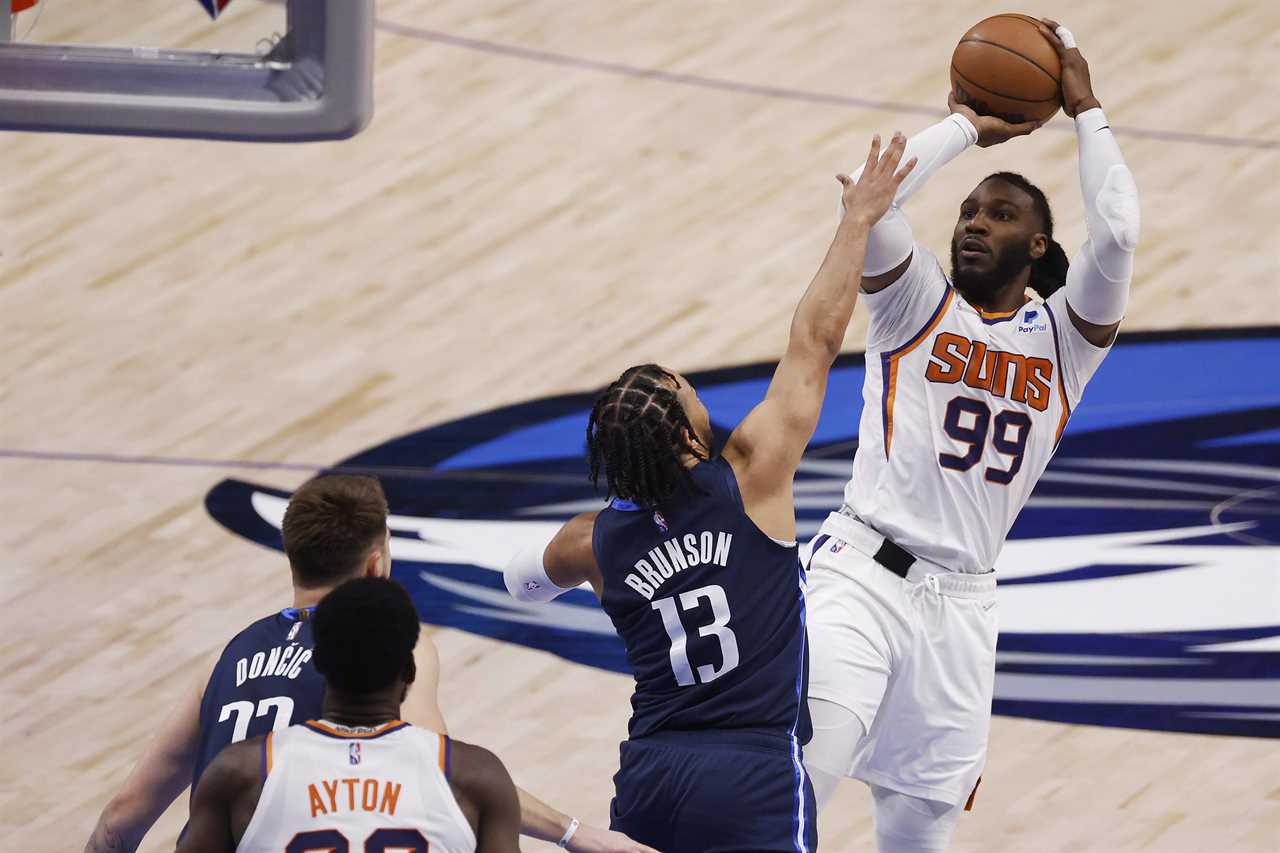
Sure, Kyrie Irving went to the Dallas Mavericks, and sure, the Brooklyn Nets then continued the controlled demolition of their failed superteam by trading Kevin Durant to the Phoenix Suns. Sure, the Los Angeles Lakers ended their famed Pat Beverley era, the biggest news around that franchise this week. But in its way, the real star of this week’s NBA trade deadline run-up was not any of those players, but something that is not yet a player at all: a second-round draft pick.
NBA second-round draft picks are not, to most of us, so exciting. There are good players to be found in the back half of the NBA Draft, to be sure. Two of the game’s current era-defining players—Nikola Jokic and Draymond Green—were second-rounders. But they’re the exceptions. A second-round pick is a lottery ticket. Let’s use the example of the 2018 draft, whose remaining players are approaching five years in the NBA: Of the 30 players taken, there are mostly guys who have turned out to be around replacement level or have washed out of the league altogether. A small handful became rock-solid contributors, like point guard Jalen Brunson, who just signed a big contract with the New York Knicks, and his teammate Mitchell Robinson, a 7-foot center. The group features no all-stars, though Brunson had a great case this year.
But to NBA teams making trades this winter, second-rounders have been very exciting. Teams have traded at least 40 second-round picks since the start of January, based on a tracker from the league. These picks run out as far as the 2029 draft. (In several cases, the same pick has now changed hands multiple times. I’m giving a total count of how many times a second-round pick went from one team to another.) As part of a four-team series of deals that included the Durant swap, the Milwaukee Bucks gave up five second-rounders to get forward Jae Crowder from the Suns. In a different deal, the Portland Trail Blazers got five-second round picks (and guard Kevin Knox) for guard Gary Payton II, who went back to his old team, the Golden State Warriors.
There are many attempts in the public domain, and more attempts that teams hold internally, to attach precise values to unmade draft picks. A second-round pick is not that valuable, but in infinite supply, second-rounders could be infinitely valuable. Regrettably, there is not an infinite supply of these picks, and trades aren’t made in a vacuum. If league rules allowed it, could you trade 80 second-round picks for Giannis Antetokounmpo? What’s the meaning of life? What really is basketball? Getting five second-round picks for Gary Payton II is a toned-down manifestation of the same analysis. Some of the NBA’s second-rounder feeding frenzy this winter is just that: Teams saw enough value in future second-round picks to accept high quantities of them in exchange for current players or other future picks.
But a bit more is going on, as one front office person explained when I incredulously asked on Thursday what the deal was with all these second-round picks. (I granted anonymity to get a good, frank picture of how this all works.) The NBA’s roster management rules are complicated, and second-round picks, in addition to offering a theoretical shot at a good player, are a sort of power-up asset for NBA bean-counters and managers responsible for their teams’ costs. So while second-rounders aren’t necessarily any more exciting to an NBA general manager as they are to you or me, they are appealing as what some in the league would call “trade lubricants.” A second-rounder is unlikely to change a team’s fortunes on its own, but it’s critical to powering the NBA’s transaction machine.
For starters: Trading athletes is difficult work. Two players might have similar skills and traits, but if one is younger and less expensive, his team will not want a similar player who is older and costlier. Enter draft picks as a value-balancing mechanism to make everyone feel comfortable doing deals. But first-rounders are better than second-rounders, and a bunch of good teams (or teams trying to get good) have already spent years trading first-rounders for good players who can help them immediately. This happens all the time. Last offseason, the Cleveland Cavaliers included three of them (and a couple more rights to swap picks) in a deal with the Utah Jazz for Donovan Mitchell. The Minnesota Timberwolves put four first-rounders (and a pick swap) in a deal for Mitchell’s old teammate Rudy Gobert. The Durant-to-Phoenix deal on Thursday involved a grab bag of first-rounders. Irving, on an expiring contract and as a huge pain, brought a first-rounder back to the Nets. You see the issue: Teams that are looking to contend in the near term only have so many first-rounders they can trade. Something else needs to grease deals.
So we have second-rounders, the easiest remaining way for NBA executives to get each other to a point of “sure, that works fine” when they’re swapping players. Simple supply and demand.
NBA rules are also playing a part, which is why the front office person took pains to emphasize that the second-rounder bonanza was multifaceted in origin. In addition to tightening up trade values and serving as an asset of last resort with first-rounders already gone, second-round picks have become a marginal but useful expense management tool for teams.
The NBA has different salary minimums for rookies and players with varying years of league experience. While those players receive what the union-negotiated minimums say they receive, their contracts can count differently for purposes of both the salary cap and the luxury tax threshold that some teams (nine or so, right now) must pay for having an expensive roster. A player whom a team takes in the second round typically earns the rookie minimum contract and only counts for that much toward the luxury tax and salary cap. But an undrafted rookie, whose actual contract will also be for the rookie minimum, counts for a higher amount against the luxury tax threshold than a drafted one does. That player counts the same amount toward the luxury tax as if he’s been in the NBA for two seasons, at which point the salary minimum is higher. The same system allows teams to pay more expensive veterans a higher minimum salary but count them at a lower minimum in the realm of the luxury tax (and the salary cap). The bottom line is that drafting more rookies in the second round, rather than signing them outside the draft, is a way for teams to save money on the league’s luxury tax.
This confusing scheme has a reason behind it: The NBA’s players union wants teams to be encouraged to spend money on veteran players without the cap or tax scaring them off, and they are encouraged to invest in veterans when an undrafted rookie costs a team a similar dollar amount as a veteran does, in luxury tax terms. The system mitigates cost-savings advantages that undrafted rookies have over long-time players, who become a lighter burden against the luxury tax and salary cap. (Remember, the advantage for drafted rookies over undrafted ones is only about the tax, not the cap.)
So, second-round picks have gained value in one other way: Teams can use them to stock the end of their bench with players who do less than veterans or undrafted rookies to bring their team toward a huge luxury tax bill. Teams have to fill out their rosters some way or another, and second-rounders help them do it without heightening their financial liabilities. It’s not the reason second-rounders are so en vogue as trade chips, but it’s a contributor. Sometimes teams have been aggressive about it. A few years ago, the Bucks did it, grabbing a couple of second-round picks, rostering them at a low luxury tax hit, and saving on the margins as they went on their way.
A second-round pick is, in one way, worth very little. A team might turn it into a player it really wants to have around, but it probably won’t, and the chances of landing a franchise-changing talent with that pick are remote. But second-round picks help general managers do the thing they love most (make trades to optimize their basketball teams), and they improve team owners’ chances of doing the thing they love most (saving a few dollars on labor). A second-round pick is nothing. A second-round pick is everything. All hail the second-round pick.
Alex Kirshner
https://slate.com/culture/2023/02/nba-trade-deadline-second-round-draft-picks-value.html
By: Alex Kirshner
Title: Why Second-Round Draft Picks Won the NBA Trade Deadline
Sourced From: slate.com/culture/2023/02/nba-trade-deadline-second-round-draft-picks-value.html
Published Date: 02-11-2023
Frequently Asked Questions
How long does it take to become an NBA superstar?
To be a professional NBA star you need to put in a lot of effort and time. It takes years of hard work, physical conditioning, as well as skill development to become an NBA star. On average, most players spend between three and five years in college honing their skills before they can make it into the draft. After being drafted, players need to continue their success in the NBA. They must earn a spot on their team and be eligible for All-Star teams. To do so, players must receive professional guidance and training from coaches. The ultimate goal of becoming a NBA superstar is not possible in a few short years. To reach these heights you must be dedicated, committed, and take the time. Anyone can achieve their dreams and be a NBA star with the right mindset.
How much does a NBA ref earn?
Referees in National Basketball Association (NBA), receive competitive salaries for their officiating responsibilities. Average NBA referees earn between $150,000- $550,000 annually. The pay scale is dependent on experience. More experienced referees earn higher salaries. Refs who are involved in the playoffs or finals earn higher salaries than those who assume additional roles like training new refs, or working in the video reviewing center. Some NBA refs also receive income from endorsements and royalty payments for their work in television broadcasts or other media outlets. A job as a referee in the NBA is highly lucrative. If one is willing and able to put in the effort, it can be a steady source of income.
In addition to salary, NBA referees also receive health insurance, retirement plans, and other employer benefits. This allows referees to live a healthy life while they officiate games, making important decisions that can have an impact on the game's outcome. Referees often get subsidized accommodation, meals, or travel expenses to away games. Referees are always striving for perfection on the court, so this can give them additional security.
NBA referees receive a decent wage for their hardwork and dedication. This is especially true when they are responsible to enforce the rules in one of the most popular sports in world. The job can be demanding, but it is a rewarding experience that provides referees with an opportunity to make a difference in basketball.
Who invented basketball
The exact origins of basketball are unknown, but it is widely believed that James Naismith created the game in 1891 while he was a teacher at the International Young Men's Christian Association (YMCA) Training School (now Springfield College) in Springfield, Massachusetts. Naismith established the basics of the game and then nailed a basket with peaches onto an elevated track. He then divided his class of 18 into nine teams and started to teach the basics of his new game called "Basket Ball." The original version used a soccer ball, and two peach baskets tacked to either end of a gymnasium. Goaltending was not an option as players could only shoot at baskets from below. The game quickly spread throughout America and, by the 1900s was an organized sport with professional players playing in large arenas. It is still one of the most beloved sports in the globe.
Who made the NBA's first basket?
Ossie Schectman, an American professional basketball player, scored the first basket in the Basketball Association of America. This was later to become the National Basketball Association. The Toronto Huskies played the New York Knickerbockers on November 1, 1946. Schectman's historic inaugural basket opened up the BAA’s inaugural season.
What is a NBA Hybrid Contract?
A hybrid contract allows the NBA to offer players higher salaries that they wouldn't otherwise be able. The salary of these contracts is partially counted against the team's maximum salary and the rest is paid to the player directly as a bonus. This allows teams offer higher salaries while maintaining compliance with league salary limits. It also gives players an incentive to sign with specific teams, as they can make significantly more money than they would have been able to otherwise.
Who is the best basketball player of all time?
It is difficult to answer this question because there are so many great players and everyone has their opinion. However, some of the top contenders for this title would include Michael Jordan, Kobe Bryant, LeBron James, Kareem Abdul-Jabbar, Magic Johnson and Larry Bird. Each of these legends made a significant impact on basketball and earned their place within basketball history. Each of these legends have their own styles of play, which have been admired worldwide by millions. It is difficult to answer this question definitively as everyone has their opinion about the greatest player of all. However, one can surely agree that any list ranking the greatest players of all time must include these six truly remarkable players.
Most people agree that Michael Jordan was the greatest basketball star of all time. He was born in Wilmington on February 17, 1963.
Jordan started his professional basketball career in 1984 with the Chicago Bulls and quickly became one of the most successful and famous players of his time. He was a sixtime NBA champion, six times NBA finals MVP. Five-time NBA regular seasons MVP. Ten-time NBA scoring lead, 10-time NBA first teams, nine-time NBA all defense first team, three time NBA steals leader.
Jordan was also a two time Olympic gold medalist and was inducted into Basketball Hall of Fame 2009. Jordan is best known for his extraordinary ability to make plays and score from anywhere on court. Because of his endless drive and ambition, he will be an inspiration forever to millions.
Jordan's legacy, the undisputed greatest player of basketball history, will continue to live on. Jordan's level of excellence is unmatched by any other basketball player. He will be forever remembered as one among the greatest sports figures ever. Michael Jordan is simply the greatest ever. His amazing career and accomplishments will not be forgotten. He was, is, and always will be "The GOAT." The one and only Michael Jordan!
Statistics
- Meanwhile, the opening night rosters include a record-setting 234 players with some G League experience, according to the NBA ( Twitter link ). (hoopsrumors.com)
- Williams would 'likely' accept a deal worth $14-15M/year; Celtics are 'unlikely' to offer such a deal (HoopsHype) (bleacherreport.com)
- An estimated 800 million viewers watched the [105]2017–18 season. (en.wikipedia.org)
- Williams would 'likely' accept a deal worth $14-15M/year; Celtics are 'unlikely' to offer such a deal (HoopsHype) (bleacherreport.com)
- The 2013–14 season opened with 92 international players on the opening night rosters, representing 39 countries and over 20 percent of the league. (en.wikipedia.org)
External Links
sports.yahoo.com
- Yahoo Mail, Weather and Search. Politics, News, Finance, Sports & Videos.
- The lowest ever recorded viewership for Game 1 of the NBA Finals is seen in ratings history
sbnation.com
si.com
basketball-reference.com
- Thomas Bryant Stats, Height, Weight, Position, Draft Status and more | Basketball-Reference.com
- Dennis Schroder Stats, Height, Weight, Position, Draft Status and more | Basketball-Reference.com
How To
How can you play NBA fantasy football?
NBA fantasy is a great way for you to keep in touch with your favorite players and teams throughout the season. To play, you'll need a NBA fantasy league platform or website such as ESPN or Yahoo Sports. Once you have signed up, you can select your NBA team by joining a league.
Once your team is established, you can monitor each player's stats to see their contributions to your overall score over the course of the season. You can change your line-up at any time to get better results for your team. To stay competitive, you will need to keep track of player transfers, injuries, suspensions and other matters as the season progresses. You'll see your team's performance compared to other league teams at the end of the season.
NBA fantasy allows you to enjoy the NBA season with your family and friends. So why not give it a try? Good luck building your team, and may the best team win!
Did you miss our previous article...
https://latestnbanews.com/news/ja-morant-named-allstar-starter-over-damian-lillard

